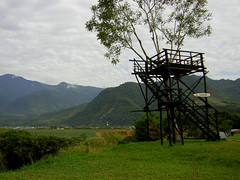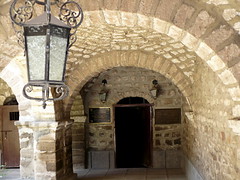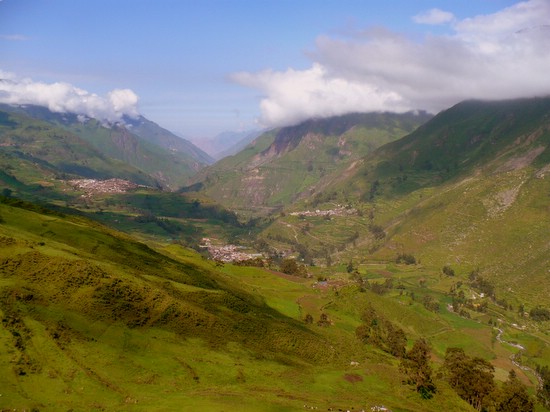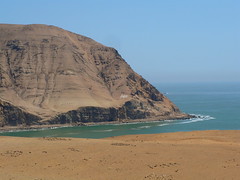Batán Grande – Bosque de Pomac
This incredible place is as interesting as it is beautiful. Baked in hot sun, cut in half by a river that floods the area in the rainy season and dotted with ancient pyramids, this dry forest of algarrobo trees on the old grounds of the Batán Grande suger-cane hacienda was the highlight of my time in Lambayeque.
35km north of Chiclayo, in Ferreñafe-Pitipo, is the green valley of the Río Leche. Green because it is covered in almost 6000 hectares of forest. It’s not often you get to see a forest on Peru’s desert coast, less often one with dozens of bird species and coastal foxes.
It’s not only a beautiful place that can be hiked around or driven around, its also a huge archaeological site. It was here that the Sicán developed, flourished and then destroyed everything they created for reasons unknown.
Some way into the grounds of the reserve is a large hill with a lookout point. Only by climbing this can you appreciate where you are. You see another hill poking out of the trees. And another, another and another. You may wonder why they are all pyramid shaped… perhaps its because these are gigantic man-made monuments.

Like all the adobe constructions in northern Peru, rains have all but completely wiped out the splendour of these monuments that now appear as if they have been melted. With a bit of imagination though, all is not lost. Remember, these where perfectly formed and decorated stepped pyramids, flattened a little from the peak so that buildings could be placed on top. Huge wide ramps that used more mud bricks than the pyramids themselves led up to them and in some cases even connected some of them together.
More damage has been caused to these structures that just by rain. The foresthad been part of an old hacienda, one that had existed since colonial times. The owner of the land decided instead of paying the peasants who lived there to grow his sugar cane he would be better off paying them to destroy the pyramids to look for gold. Many now have huge sections dug out of them. Locals tell me, from what they heard, this made the land owner very rich, so lots of gold artefacts must have been found and destroyed. The area has since been turned into a national park and protected.
In 1978, Japanese Izumi Shimada, archaeologist and anthropologist began to study the area. It wasn’t until 1992 though that his team discovered a tomb of an elite member of Sicán society. From this grave, 1.2 tonnes of precious metals in the form of jewellery and religious artefacts were removed, now stored in the National Sicán Museum.
 Since, more tombs have been found, two either side of the Huaca Loro. At another pyramid 30m (100ft) long, Shimada’s team found the bones of a woman in her early 20s surrounded by figurines of Sicán gods, ceramics and objects in copper and gold. Another set of bones, clearly from a person of some stature, were found in a seated position accompanied by a metallic crown, shells, and ceramics.
Since, more tombs have been found, two either side of the Huaca Loro. At another pyramid 30m (100ft) long, Shimada’s team found the bones of a woman in her early 20s surrounded by figurines of Sicán gods, ceramics and objects in copper and gold. Another set of bones, clearly from a person of some stature, were found in a seated position accompanied by a metallic crown, shells, and ceramics.
The park entrance is just off the road that continues on to the town of Batangrande, you’ll see a big sign on the left. There you will find a building used by archaeologists, and official guides of the project – trained locals. Very few tourists make it here, despite it being the best attraction Lambayeque has in my opinion.
Photos –
Tags: algarrobina, batan grande, forest, fox, hacienda, izumi shimada, lambayeque, pyramids, rio leche, ruins, sican










